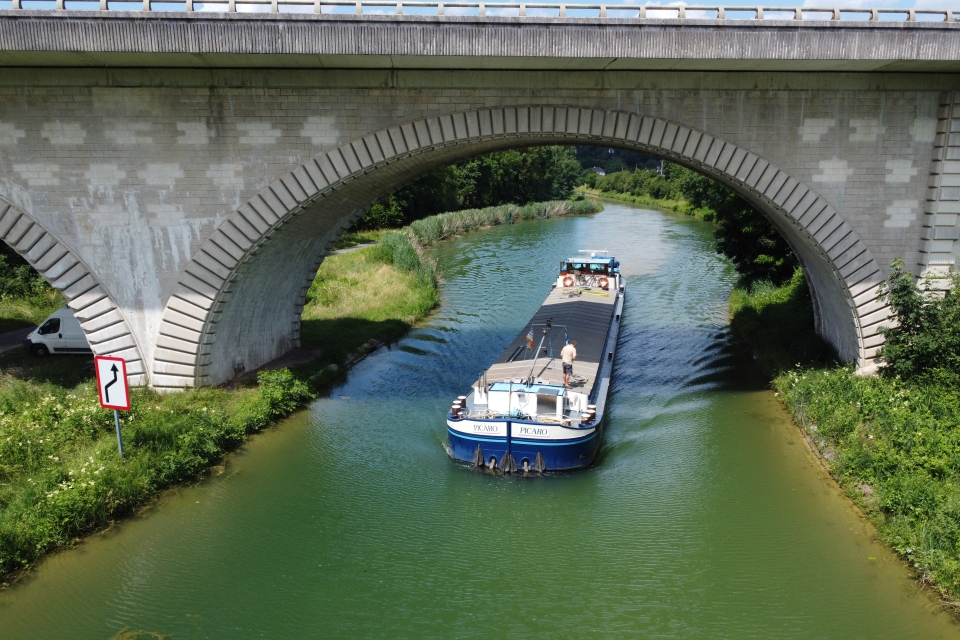This is an important lesson for everyone involved in inland navigation, especially politicians, policy makers and officials. Ensure that in reducing emissions, it does not become impossible to transport cargo on the smaller inland vessel. Because even that smaller inland waterway vessel, which includes the “spits” that can sail deep into France, is crucial to maintaining inland waterway transport as a whole and thus an environmentally friendly form of transport.
So don’t make the mistake that so many governments in the Netherlands and surrounding countries have made with rail freight. Because by closing down less busy routes and railway yards, this type of transport has largely disappeared. Think of the demise of NS Cargo and Van Gend en Loos. The latter once offered everyone the opportunity to transport their goods by train to every corner of the Netherlands. Van Gend en Loos eventually ended up with Germany’s DHL, which still transports a lot, but not by ship.
What has remained for rail transport are the large flows of bulk cargo between the seaports and large inland ports and some larger shippers. The smaller shippers and manufacturers mainly opted for road transport. And of course there were lots of reasons why rail freight transport has declined so much, much less flexible than trucking for example, but it is a chicken and egg discussion.
Also read: SWZ|Maritime’s March 2023 issue: The energy transition depends on the engineers
Cherish the small ship
In inland shipping, the smaller vessel is still there, and many of its clients do not need their cargo on the conveyor belt punctually at three o’clock this afternoon. So know the lesson of rail transport and cherish that small ship. And that means that the skipper/entrepreneur with such a ship must also have the opportunity, both now and in the future, to make the energy transition happen and adapt his ship to the demands of the time.
Therefore, SWZ|Maritime’s April inland navigation special focuses on the position and adaptation possibilities (retrofits to remain in technical terms) of smaller inland navigation vessels. Coordinating this special is our inland navigation specialist Martin van Dijk, himself a former inland navigation entrepreneur and former international secretary of Royal Schuttevaer, and a long-time member of the SWZ|Maritime editorial team. And when someone is so versed in all the ins and outs of inland navigation, who better to write a Maritime Market/Markets than Martin van Dijk. So, our thanks go to him.
This is editor-in-chief Antoon Oosting’s editorial accompanying the April 2023 issue.
Also read: SWZ|Maritime’s February 2023 issue: Nothing beats Groningen in shipbuilding
SWZ Archive
Our digital archive is once again available to subscribers and they can read the digitial version of our April issue there. Subscribers can register here to gain access. Not yet a subscriber? Visit our subscription page.
Also read: SWZ|Maritime’s January 2023 issue: Maritime sector has much to offer
The articles in SWZ|Maritime’s April issue
In addition to the regular sections such as Dutch news, Markets, Maritime monthly, Global news, Book reviews, news from the KNVTS and Mars Report, the articles (some in Dutch) in the April issue are:
- Ook kleine binnenvaart wil duurzamer varen
- Brandstof besparen met solarluiken
- Alternatieve brandstoffen in de binnenvaart
- Green Award stimuleert duurzame binnenvaart
- Hoe simulator-onderzoek binnenvaart veiliger maakt
- Rotterdam has world’s fi rst hydrogen watertaxi
- The future of autonomous shipping in inland navigation
- All at sea?
- The KNVTS takes soundings
- EU carbon pricing brings new pressures and new plays
- Arctic update
SWZ’s April cover picture: Inland navigation by “spits”* is crucial for transporting goods to and from France. The Picaro is part of this fleet and has its own drone on board (photo: crew Picaro).
* A spits is a cargo vessel whose dimensions are derived from the dimensions of locks and canals in France. The French name is péniche. These dimensions of canals were laid down in 1879 by Minister of Public Works Charles de Freycinet. Lock chambers had to be at least 5.20 metres wide and 40 metres long. The minimum water depth is 2.20 metres and the maximum clearance is 3.50 metres.








